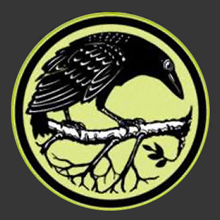Originally from Montreal, Don Moore is a 25-year resident of Nova Scotia and has been turning wood since 1994. He has developed an innovative approach which has taken his one-of-a-kind sculptures into the art world. His work has won several provincial and national awards and his sculptures can be found in Germany, Japan, England, New Zealand, the United States, and across Canada. Don has served for six years on the standards committee of the Nova Scotia Designer Crafts Council where he is a juried member. He is also founding member and past vice-president of the Nova Scotia Woodturner’s Guild. He has designed, developed and produces various woodturning accessories and tools.
Don lives in a 100-year-old farmhouse on a 450-acre woodlot in the small country village of Upper Kennetcook, where he gives instruction in woodturning at his shop and works on his 450 acre woodlot.
Don discussed and demonstrated shear-scraping techniques while working on end grain. Tearout being the problem when turning endgrain. He also discussed finishes and how to get a quality finish on your piece.
Here are some tips gained:
1. Finish with double-boiled linseed oil and Turner’s Polish for a great finish.
2. Use Future Floor Polish to strengthen ‘punky’ or spalted areas of wood. Dab it on your piece with a sponge and let sit for 24 hours. Then turn and coat with polish again. Continue until you are done. Only coat your whole piece on first coating and then only on spalted areas on subsequent coatings.
3. Completely finish the outside of your piece before turning the inside.
4. Ensure that your tool edge is at 45 degrees for optimum shear cutting.
5. To create a ‘curved’ skew sharpen at a 70 degree angle for the first half of the skew (from the toe) and then curve the second half to the heel instead of curving the whole edge.
6. Always use a tack cloth before finishing.
7. Sharpen your scrapers upside down. This automatically creates the burr.
8. Your scraper handle should always be higher than the point of contact.
This was definitely a great afternoon. There’s nothing like watch a master at work!
Back to the shop…
